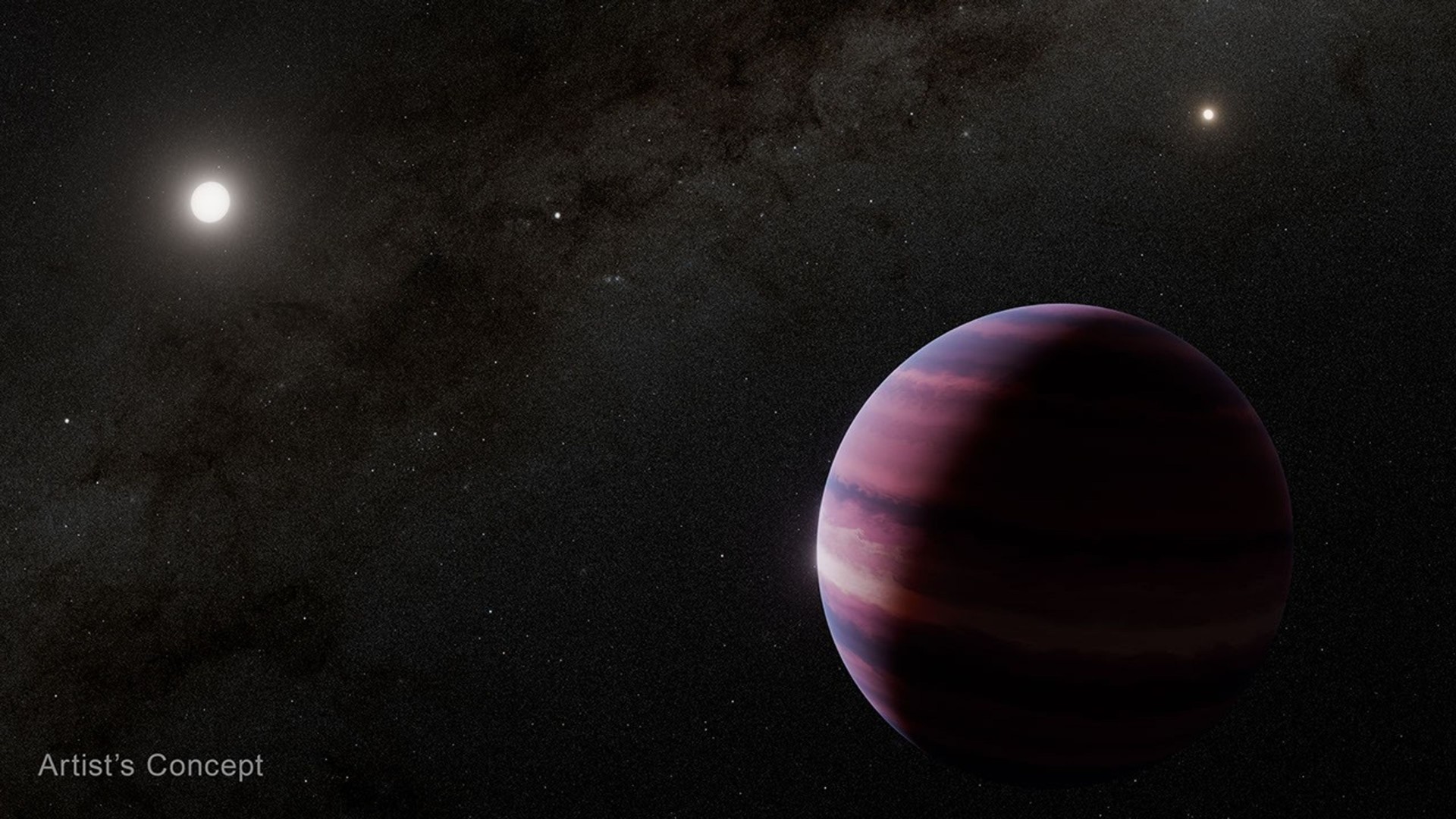James Webb Space Telescope spots a potential new exoplanet just 4 light-years away from Earth
The candidate gas giant orbits Alpha Centauri A, a nearby star much like our sun.

Astronomers using the James Webb Space Telescope (JWST) have found strong evidence for a new exoplanet — one orbiting Alpha Centauri A, the nearest sun-like star to Earth. It's located just four light-years away from us, in the Alpha Centauri triple-star system.
Using JWST's Mid-Infrared Instrument (MIRI), the team imaged Alpha Centauri with a coronagraphic mask to remove the glare from the stars, allowing them to see much fainter objects like planets. That revealed a potential orbiting world some 10,000 times fainter than Alpha Centauri A.
While the planet candidate is in Alpha Centauri A's habitable zone — the range of distances from a star where it's possible for liquid water to exist on a world's surface — it is a gas giant and thus wouldn't be able to support life as we know it. Still, the potential planet is an exciting discovery.
For starters, it's sure to generate interest from sci-fi fans — after all, the "Avatar" film series' fictional moon Pandora circles a gas giant that orbits Alpha Centauri A.
But there's much intrigue within the realm of science, too. At a distance of just two astronomical units from its host star (twice the distance between Earth and the sun), the planet candidate, if confirmed, would be the closest to its host star ever imaged. It would also be the first planet imaged around a star that matches the sun in both age and temperature.
"With this system being so close to us, any exoplanets found would offer our best opportunity to collect data on planetary systems other than our own," Charles Beichman, the executive director of the NASA Exoplanet Science Institute at the California Institute of Technology (Caltech) and a senior scientist at NASA's Jet Propulsion Laboratory in Southern California, said in a statement.
The Alpha Centauri system hosts two confirmed exoplanets, both of them around the red dwarf star Proxima Centauri. There's still a long road ahead before the candidate Alpha Centauri A gas giant can join the list.
Breaking space news, the latest updates on rocket launches, skywatching events and more!
Subsequent JWST observations did not reveal additional evidence of the planet, though computer simulations suggest the planet might just have been too close to Alpha Centauri A to be imaged.

The team hopes that further observations by both JWST and the upcoming Nancy Grace Roman Space Telescope, scheduled to launch in May 2027, might provide the proof required to confirm the planet.
That would certainly give scientists much to study in the years to come. "[The planet's] very existence in a system of two closely separated stars would challenge our understanding of how planets form, survive, and evolve in chaotic environments," said Aniket Sanghi, a Caltech graduate student who co-led the research with Beichman.
The scientists report the new results in two papers that have been accepted for publication in The Astrophysical Journal Letters.

Space.com contributing writer Stefanie Waldek is a self-taught space nerd and aviation geek who is passionate about all things spaceflight and astronomy. With a background in travel and design journalism, as well as a Bachelor of Arts degree from New York University, she specializes in the budding space tourism industry and Earth-based astrotourism. In her free time, you can find her watching rocket launches or looking up at the stars, wondering what is out there. Learn more about her work at www.stefaniewaldek.com.
You must confirm your public display name before commenting
Please logout and then login again, you will then be prompted to enter your display name.


